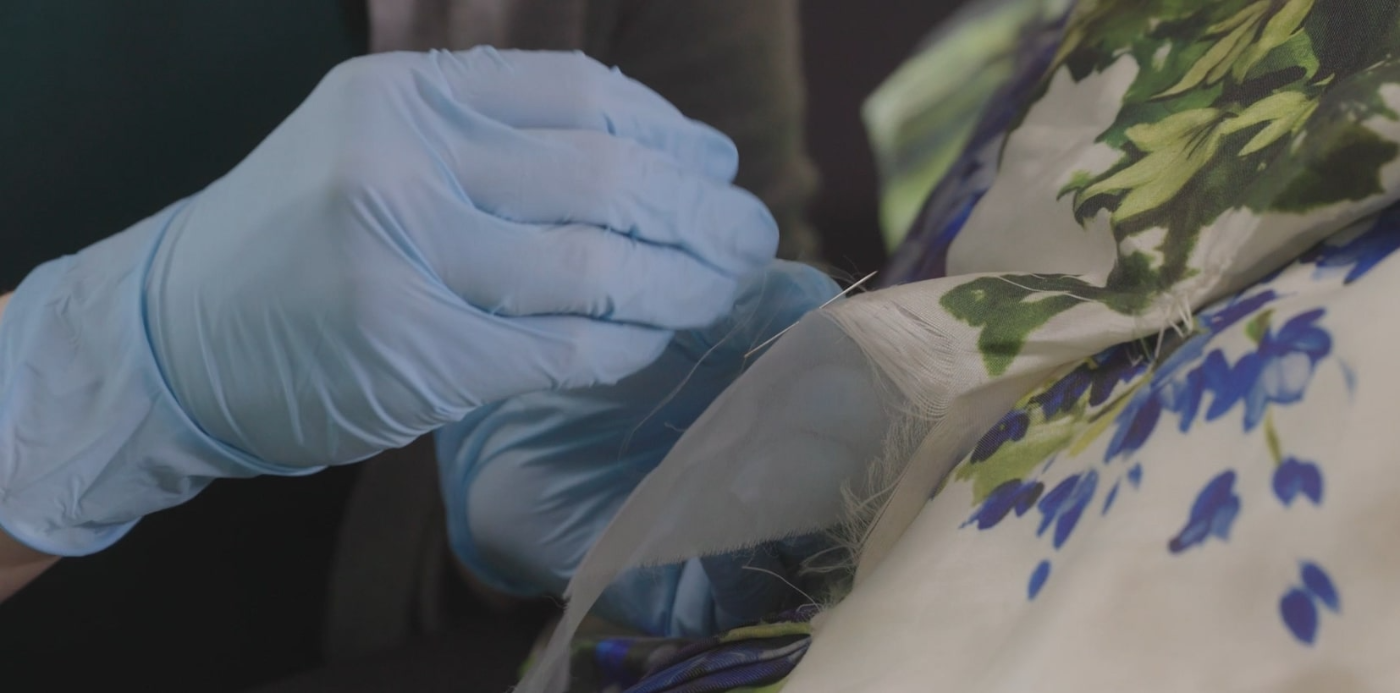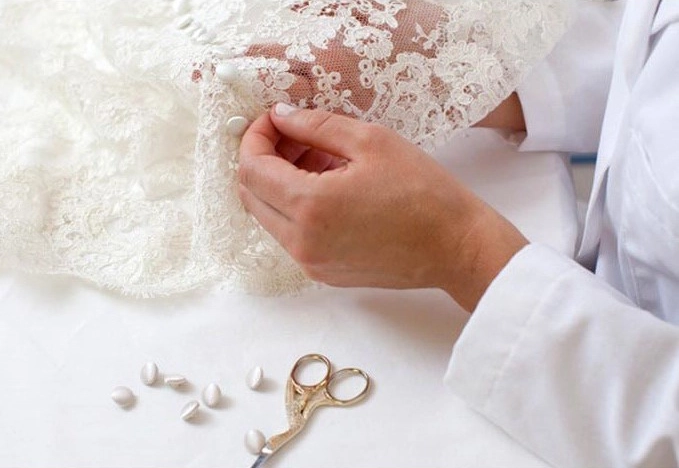Wedding Dress Mending Services
Mending and stabilization treatments play crucial roles in textile preservation. Stabilization prevents further damage by securing weak seams, loose threads, and embellishments to prevent these areas from detaching or continuing to detach. Some embellishments may need to be sewn down using couching, a type of stitch used to unobtrusively hold down another thread, or covered with conservation netting, a fine mesh textile, to prevent loss, snagging, and damage during cleaning.

Additionally, fragile areas are stabilized with netting to provide support and reinforce the weakened area without causing further damage. The net is sewn to the fabric where the fabric is stable and provides a backing for the weakened area. Threads are used to couch the weakened fabric to the net support, to help the net reinforce the weakened area during cleaning. In some cases, netting is used both as a backing and covering to support very weak areas with loss and tears that need to be secured.
In some cases, this net support is left in place to continue to support the weakened area in storage. Stabilizations for cleaning are removed after cleaning and leave no trace. Tears where the fabric is not weakened are stabilized by mending. Mending these tears prevents them from catching or tearing more during cleaning. Mending also restores the functionality of the garment so that it can be worn again.

By replacing missing buttons, snaps, hooks, bustle loops, and swing tacks the garment can be worn again someday. Mending treatments are also essential for aesthetic restoration. By addressing visible damage, such as tears, holes, missing beads, or buttons, the textile can be restored to its original beauty.
We provide clients with a treatment plan prior to commencing work, including mending and or stabilization recommendations when required, to add an important layer of transparency so that they better understand our thinking and the processes we will undertake on their behalf.
